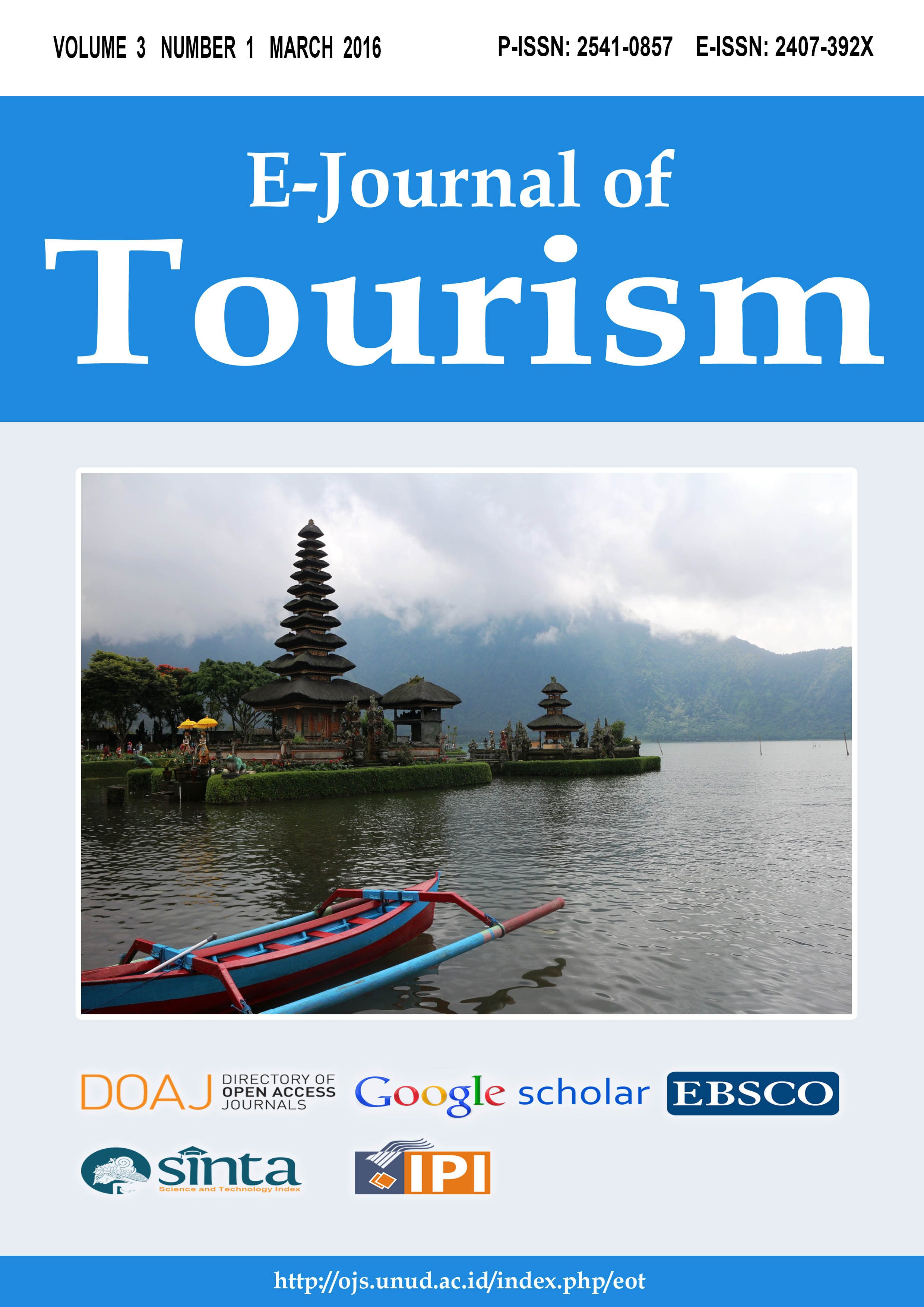Spiritual Tourism: a Case Study of Foreigners’ Participation in The Pitrayajna Ceremony in The Desa Pakraman of Muncan, Selat, Karangasem, Bali
Abstract
The influence of globalization appears to occur worldwide and affect any joint of life, including small village near Mount Agung, named Muncan Pakraman village, Karangasem, Bali. When the series of Pitrayajña ceremonies (Balinese traditional cremation series) took place in 2009 at this village, a lot of foreigners from various countries got involved, includeing Germany, Turkey, Israel, the Netherlands, UK, Spain, Belgium and Italy. They were involved not only as a spectators or tourists, but participated in the ceremony for their ancestors, and deceased loved ones and took part in "Ngayah" (working together and voluntarily, without being paid). Pitrayajña ceremony is processions of sacred ceremonies, which usually performed only by Hindus, especially in Bali, was also participated by foreigners (international students of Ratu Bagus Ashram), who were having a spiritual journey to find their true identity. Formally, they were not Hindus, but believed in the teachings of the Hindu religion, and their activities are form of spiritual tourism implementation in Bali. The main problem of research is to reveal how the phenomenon of deconstructing Pitrayajña ceremony in Bali, how the participation of foreign persons in this ceremony, what motivated them, what was the public perception of the deconstruction of Pitrayajña ceremony, the views of the Hindu leaders in Bali to the deconstruction of the Pitrayajña ceremony and whether there was a change of meaning, if the changes are purely the universality of Hindu religion itself, how its impact on society, and its relation to spiritual tourism. With the formulation of a clear scope, this research is also expected to produce maximum findings.
Downloads
Keywords

This work is licensed under a Creative Commons Attribution 4.0 International License.
The copyright of the received article shall be assigned to the journal as the publisher of the journal. The intended copyright includes the right to publish the article in various forms (including reprints). The journal maintains the publishing rights to the published articles.




















